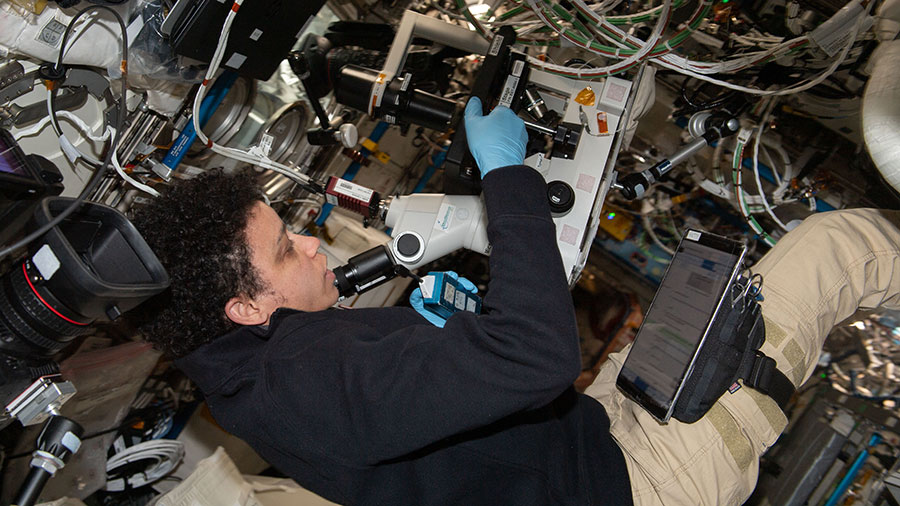Aging Process, CubeSat Preps, and Space Physics Fill Station Research Schedule

Human research, nanosatellites, and space physics topped the research operations aboard the International Space Station on Wednesday. The Expedition 67 crew also continued packing a U.S. cargo craft while servicing Russian spacesuits.
NASA Flight Engineer Jessica Watkins peered at tissue stem cells through a microscope in the U.S. Destiny laboratory module today to understand how the human immune system ages in space. Observations may provide insights into the biological aging process and tissue regeneration possibly informing new ways to keeps astronauts healthy in space and treat medical conditions on Earth. Watkins then spent the afternoon readying cargo packed inside the SpaceX Dragon resupply ship for return to Earth in mid-August.
A small satellite deployer loaded with CubeSats has been installed on an external science platform and placed inside the Kibo laboratory module’s airlock by NASA astronaut Kjell Lindgren today. The deployer will soon be moved into the vacuum of space where the CubeSats will be released into low-Earth orbit for a variety of research programs. Lindgren later set up an AstroBee robotic free-flyer to rehearse pre-programmed maneuvers for the upcoming student-based Kibo Robotic Programming Challenge 3.
Flight Engineer Samantha Cristoforetti of ESA (European Space Agency) explored the dynamics of foams, droplets, and granular materials with implications for future planetary travel and industries on Earth. She swapped the samples inside the Fluid Science Laboratory’s Soft Matter Dynamics experiment container.
NASA Flight Engineer Bob Hines started his day transferring U.S. spacewalking gear into the orbiting lab’s Russian segment. During the afternoon, he serviced hardware supporting the Ring Sheared Drop fluid physics study that could lead to a better understanding of Alzheimer’s disease and the development of advanced materials.
Roscosmos cosmonauts Oleg Artemyev and Denis Matveev took the U.S. spacewalk components, including tools and video cameras, Hines delivered today and installed them on a pair of Russian Orlan spacesuits. The duo will conduct a spacewalk on Aug. 17 to continue outfitting the European robotic arm. Flight Engineer Sergey Korsakov focused on network cable connections inside the Nauka and Zvezda modules.
from Space Station https://ift.tt/ReHd1D4
Comments
Post a Comment